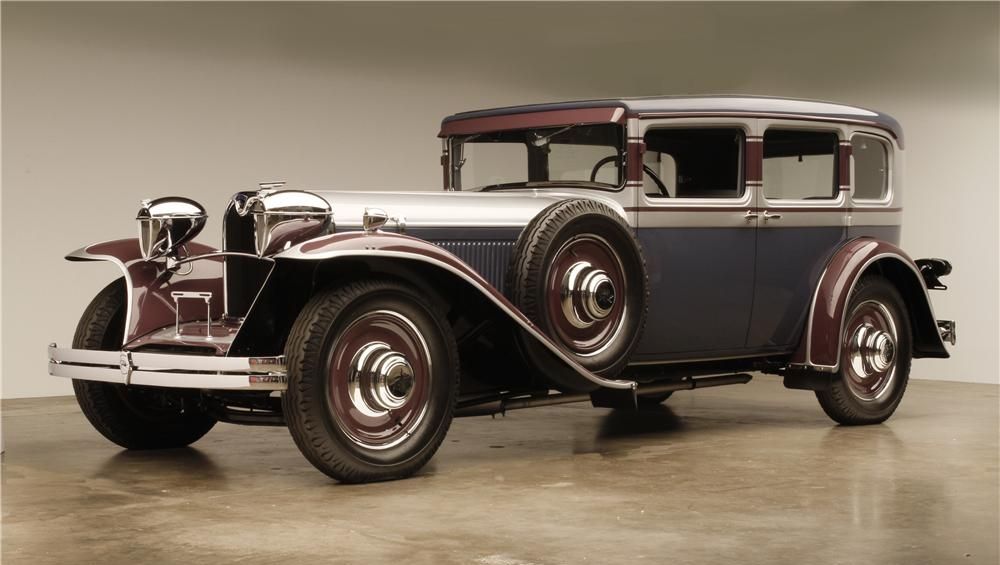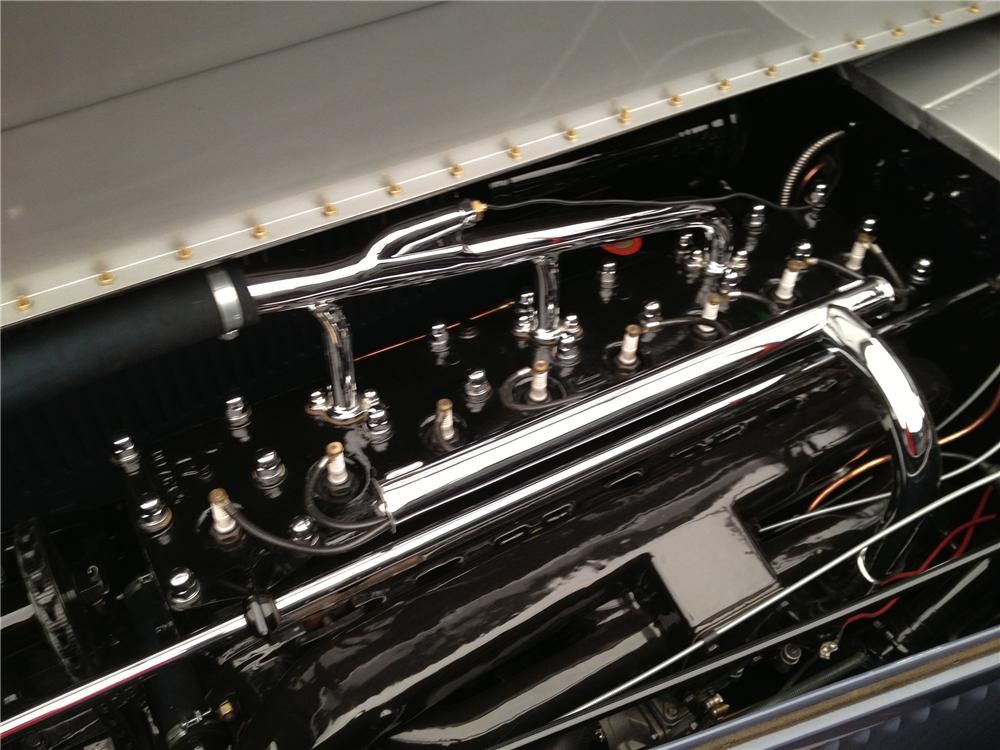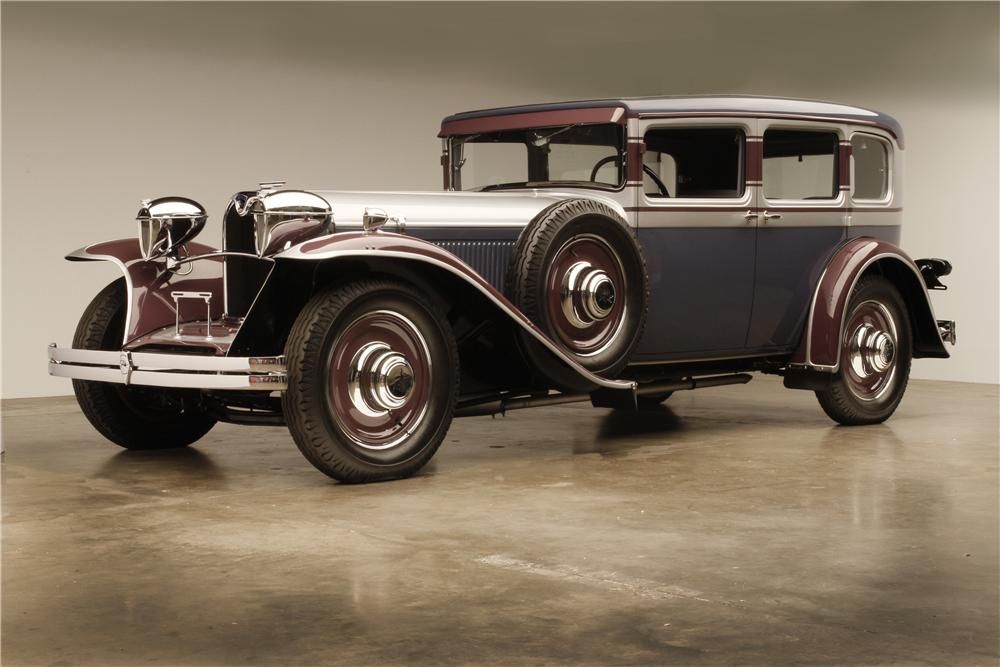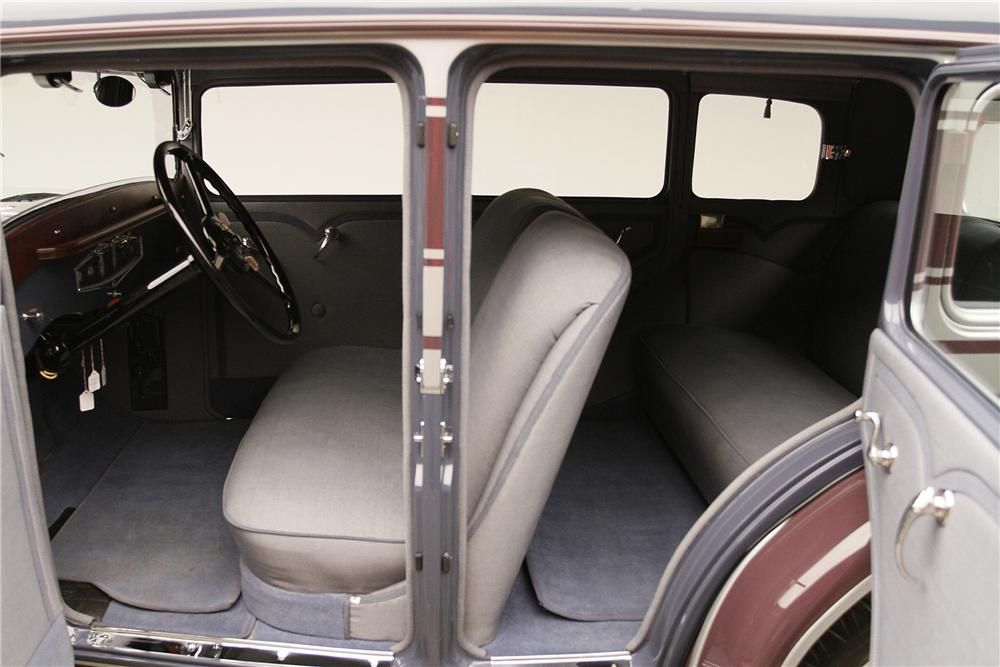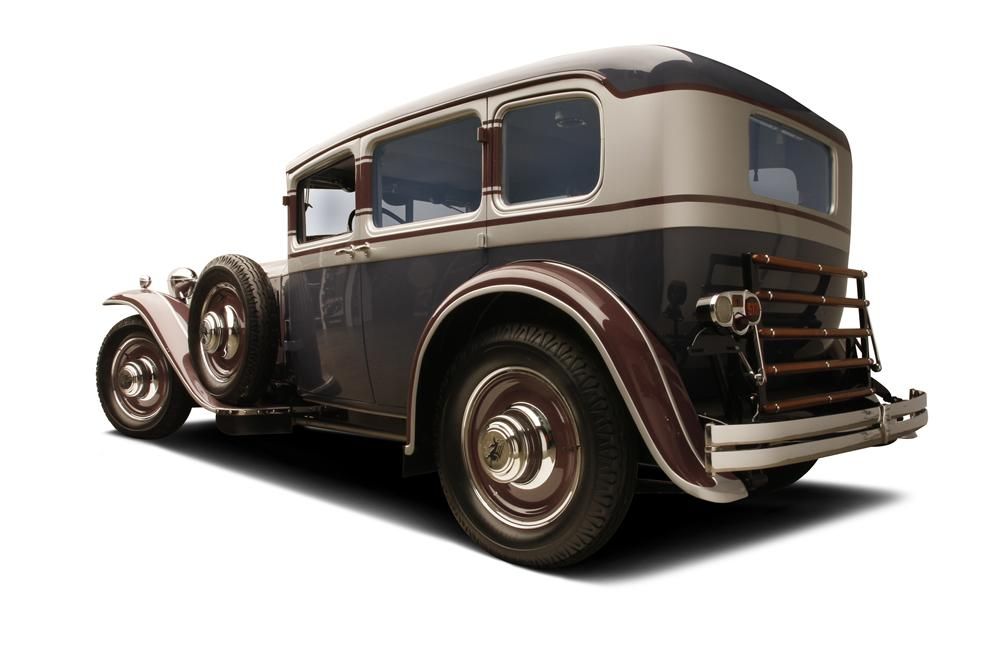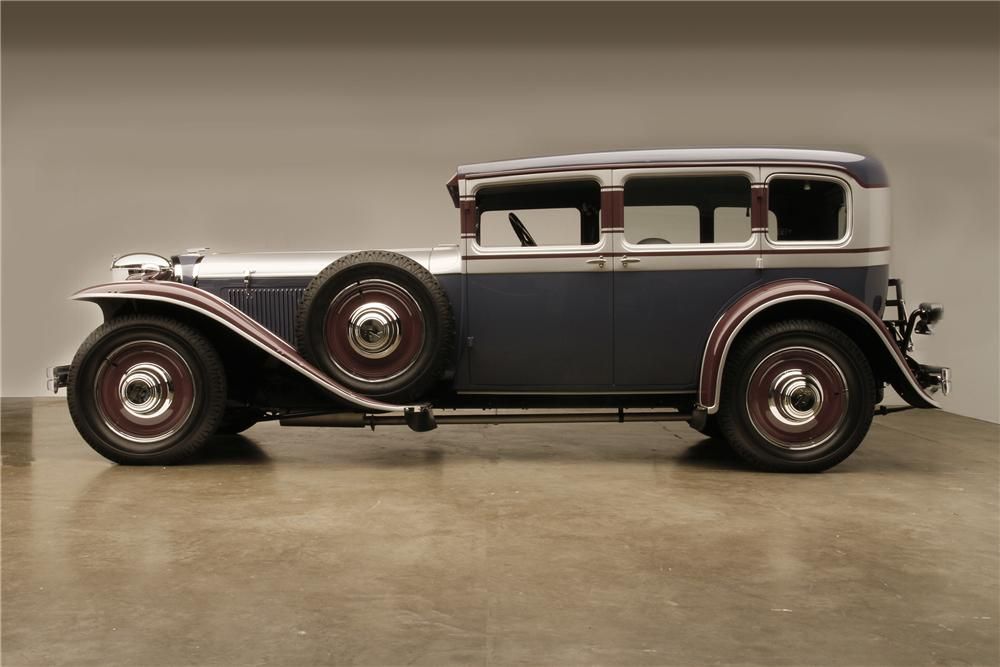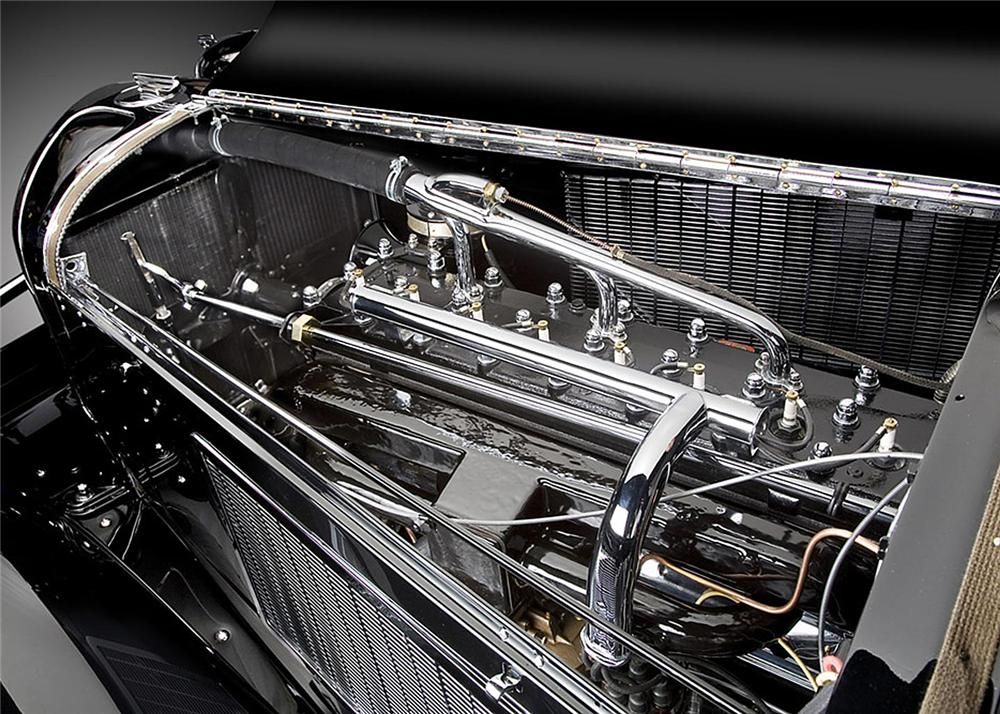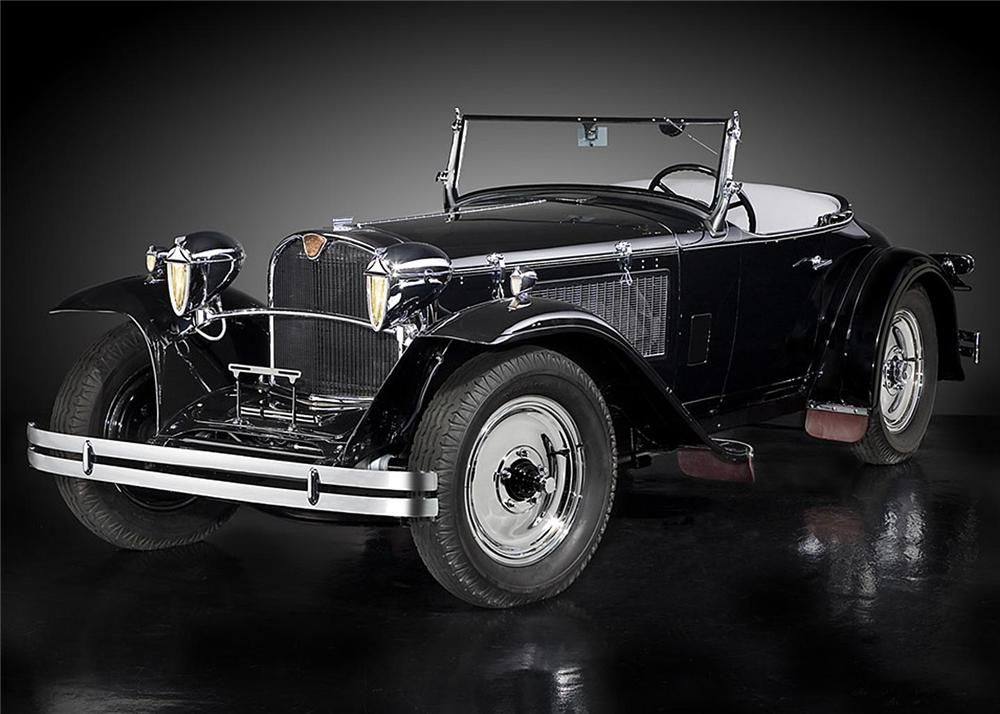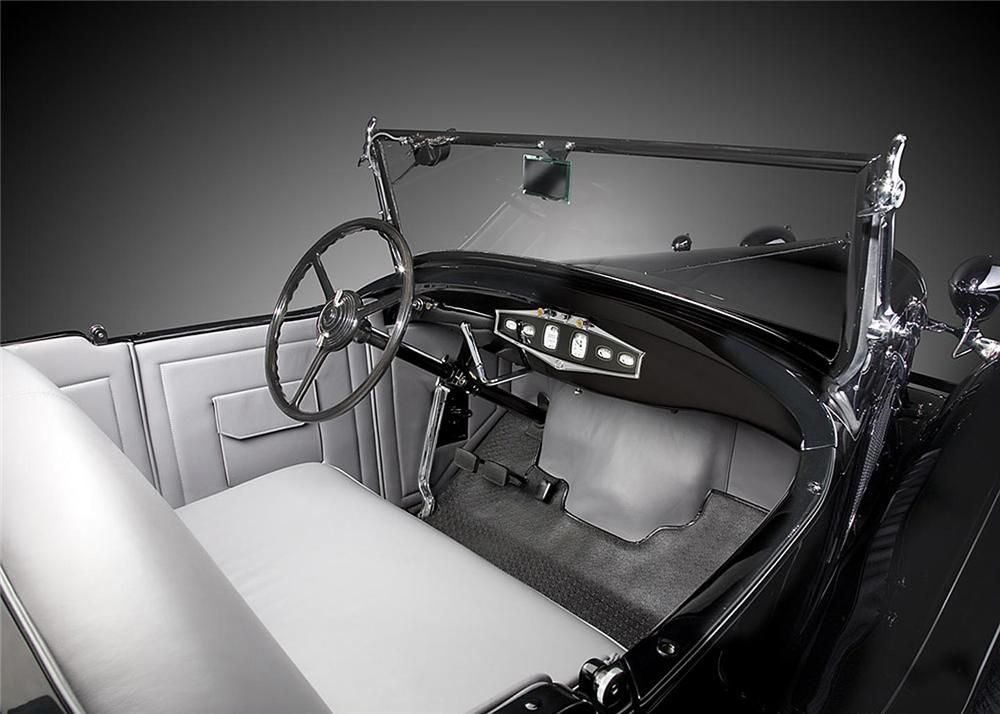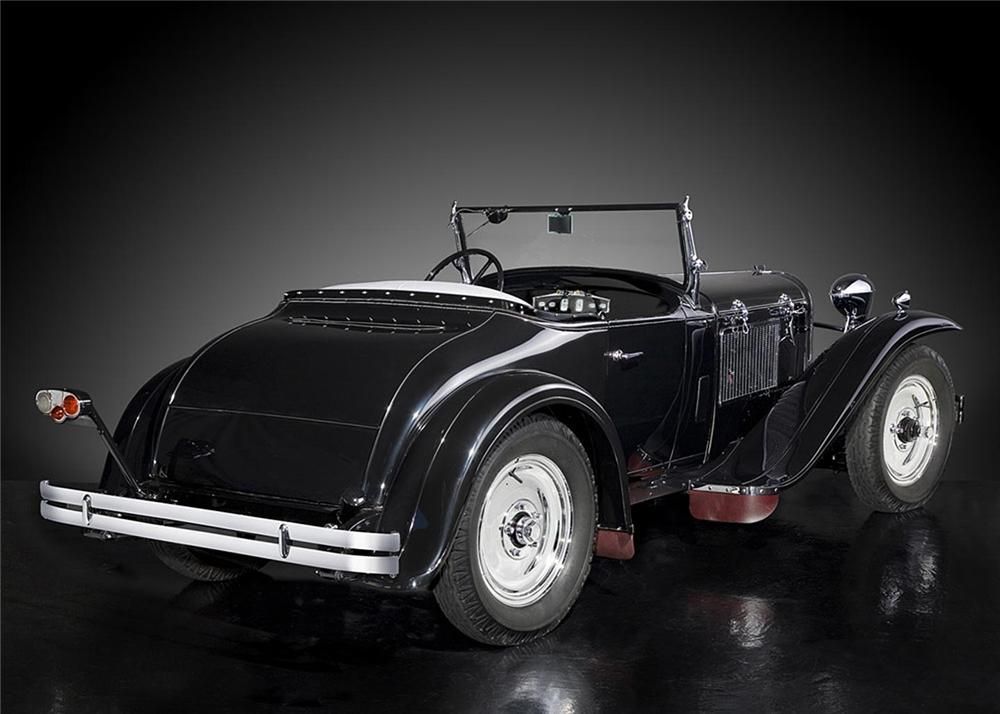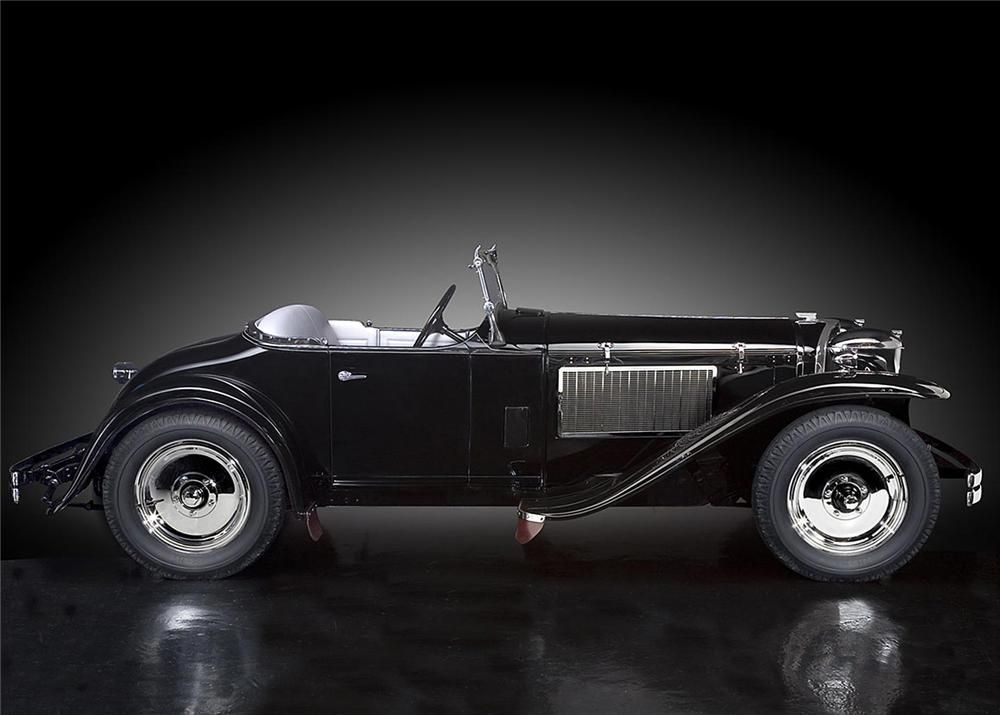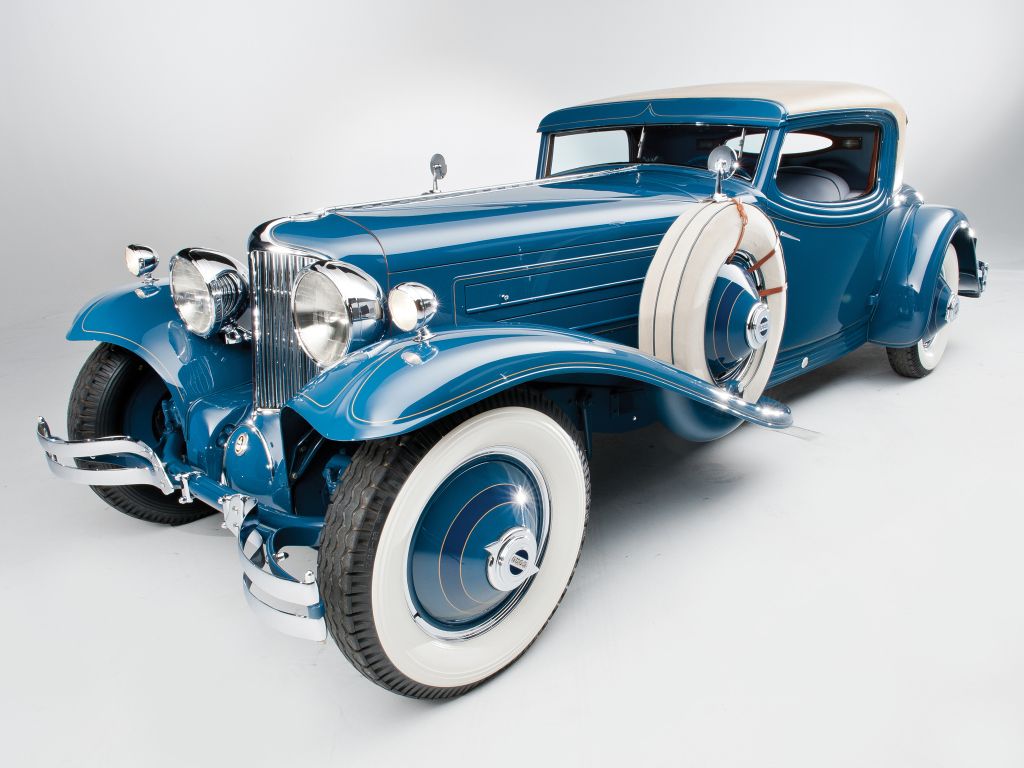Not everyone knows at first glance what a Ruxton is, but it's a car that few people forget. That's just how its parent company New Era Motors intended it. In photos, the wild, multi-colored stripes make it one of the most instantly memorable cars to ever turn a wheel. When seen in person, the radical, low-slung body just adds to that impression. In addition to being innovative, the Ruxton Model C stood out in an era of cars that specialized in standing out.
That uncommon paint job (which is not a custom job; it was applied at the factory in St. Louis, MO) was chosen to put an exclamation point on a most uncommon car. The brainchild of William Muller, the Ruxton was a ridiculously long and low-slung front-wheel drive car in an era when front-wheel drive was almost unheard-of. The car was initially intended as a prototype that would convince a manufacturer to step up and produce it and named for an industrialist whom it was hoped would subsequently invest in the project (he didn't and ultimately had nothing to do with the company whatsoever). When the search for a builder fell through plans were undertaken to put it into production independently. That's the extremely simplified version: the car that became the Ruxton bounced around and was connected to a veritable who's-who of 1920s American car manufacturers in its quest for production, including Hupp, Gardner, Kissel, Marmon and Moon. Ultimately, Muller and Wall Street wheeler-dealer Archie Andrews formed New Era Motors and bought out the Moon Motor Car Company. One hostile takeover (complete with executives barricading themselves in the factory) later, the Ruxton went into production in 1929.
Two things snuffed the Ruxton's candle within a year: the stock market crash and the introduction of the Cord L-29. The front-wheel drive Cord, fielded by the much better-established Auburn-Cord-Duesenberg triumvirate, outsold the Ruxton handily, and arguably left a bigger impression on the automotive industry. After four months production was halted with just about 500 cars built. The Ruxton’s grand gesture was relegated to being a fancy footnote.
Although not often seen among the literal and figurative big boys of the 1920s and 1930s, a few Ruxtons have survived and been restored, making these candy-striped, odd-shaped sedans->ke142 a rare treat.
Continue reading to learn more about the 1929 Ruxton.
1929 Ruxton
- Make: Array
- Model: 1929 Ruxton
- [do not use] Vehicle Model: Array
Exterior
Beneath the wild striped paint jobs, which were applied to several show cars and intended to eventually be standard production, the cars were still quite distinctive. Although the upright silhouette was similar to most contemporary cars, the Ruxton lacked running boards, the better to emphasize its low ride height.
Three body styles were offered: a five-passenger sedan, two-seat roadster and a phaeton. The front-wheel drive layout gave the Ruxton an almost freakishly low body, a fact that was most obvious when one was parked next to a conventional car. The fender tops were almost level with the hood. Ruxton installed catlike Woodlites on most of the cars.
The narrow lights were an aftermarket option available to other manufacturers, and Ruxton adopted the narrow lights for a more distinctive look (and possibly because conventional round headlamps stuck up above the hood, giving the car a frogeyed look). Small parking lamps mimicked the shape of the Woodlites. 19-inch disc wheels capped with extravagant chrome hubcaps were also a modern touch for the era.
The striped paint jobs were available in mahogany, red and purple themes. Designed by New York stage desinger Joseph Urban and his daughter Gretl, the bands of color made the Ruxton look even longer and lower than it was.
Interior
Upholstery and interior fabrics exclusive to the Ruxton were produced by drapery and upholstery supplier F. Schumacher and Co. Otherwise the Ruxton's interior was handsome, with a wood cowl and a small cluster of square art-deco gauges centered on the dash. On the striped art-deco cars, of course the interior was striped to match the exterior. Vertical bands of color decorated the Ruxton's door panels and seats.
Drivetrain
In the early days of the industry, smaller companies used engines built by dedicated engine builders, and the Ruxton was no exception. The L-head 268.8 cubic inch straight eight was produced by Continental, and produced 100 horsepower. It was reversed in the chassis, with a unique space-saving split gearbox attached. Second and third gears were mounted at the rear, while first and reverse were at the front. A worm-gear final drive sent power to the front wheels via universal joints.
The suspension was more conventional, with a reverse-curve beam axle in the front and semi-elliptic leaf springs at the rear. The large wheels meant large brakes, and the Ruxton also weighed less than many of its competitors, giving it decent performance in comparison.
Prices
The Ruxton was a luxury car, and pricing was initially announced at $4,500 for the sedan and $4,600 for the roadster. A special introductory price of $3,195 for both models ended up being the actual selling price, since the car was so short-lived. That price put it in line with competitors like the Cord L-29 and Pierce-Arrow 133, while costing less than a contemporary Cadillac. About 494 Ruxtons were produced and survivors are extraordinarily rare. Less than twenty are known to still exist. The most recent sale on record was in 2013, when a Model C sedan went for $275,000 at Barrett-Jackson.
Competition
Cord L-29
The "other" straight-eight powered, front-wheel drive car to debut in 1929 is much better remembered. The Cord L-29 seems to have inherited some styling gravitas from its cousins at Duesenberg, because its classic looks turned heads without resorting to wild paint jobs. In 1930, the L-29 outsold the Ruxton by a factor of over three to one.
Conclusion
Style! Pizazz! Corporate drama! The Ruxton had all three, making it a quintessential 1920s flash-in-the-pan story. Would the wild, low-slung car with the stripes have finally taken off if not for the Great Depression? It's hard to say, considering that none of the marques that the Ruxton was associated with survived the economic downturn either. If the bottom falling out hadn't gotten Ruxton, there's a good chance that Archie Andrews' shady business practices would have taken it down instead.

